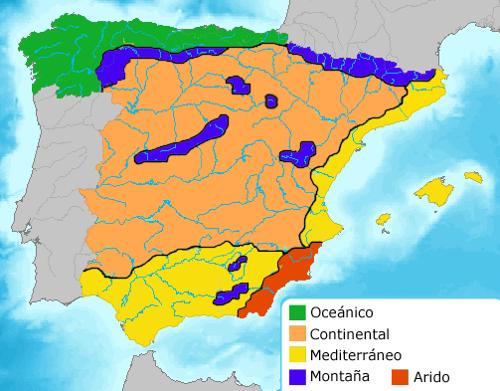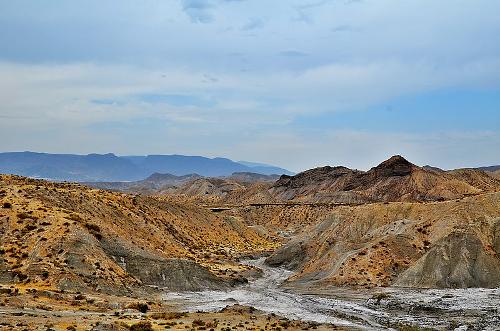SPAIN
Climate and Weather

Climate and Weather

Cities in SPAIN
| Barcelona | Benidorm | Bilbao |
| Blanes | Madrid | Nerja |
| Salou | Torremolinos | Valencia |
Popular destinations SPAIN
| Andalusia | Catalonia | Costa blanca |
| Costa brava | Costa del sol | El hierro |
| Formentera | Fuerteventura | Gran canaria |
| Ibiza | La gomera | La palma |
| Lanzarote | Mallorca | Menorca |
| Tenerife |
Climate and Weather
 Climate types SpainPhoto: FDV CC 4.0 International no changes made
Climate types SpainPhoto: FDV CC 4.0 International no changes made
As a result of the terrain, there are large climatic differences in Spain between the different areas as well as within these areas. There are also big differences between the seasons and the day and night temperatures.
Large parts of Spain have more of a continental climate than a Mediterranean climate. The inland in particular has a typical continental climate. There are large temperature differences with summer temperatures of an average of 24° C and winter temperatures of an average of 2 to 4° C with regular night frost. In summer the temperatures sometimes reach around 40° C, while in winter temperatures are down to –10° C. In some places in the interior, precipitation is so low that it approaches a steppe climate.
The continental character of the climate is also strongly determined by the cold "norte" wind in winter and the hot, dry and dusty "solano" and "leveche" in summer.
The entire east coast has a Mediterranean climate with hot and very sunny summers and slightly increasing temperatures to the south (July: Barcelona 23.3° C; Cartagena 23.9° C). Winters on the Mediterranean coast are mild (10-12° C) with little rainfall.
The north coast has a moderately humid maritime climate and it is much cooler in the summer (18-22° C) than the inland and the winters are mild (7-10° C).
Average annual rainfall is 1600 mm in Santiago de Compostela in the northwest, against for example no more than 540 mm in Barcelona and 420 mm in Madrid. Spain is also divided into "green Spain" or España Verde or la España húmeda in the north and northwest and "dry Spain" or la España seca.
 The Tabernas Desert in Almeria SpainPhoto: Amjad Sheikh CC 3.0 Unported no changes made
The Tabernas Desert in Almeria SpainPhoto: Amjad Sheikh CC 3.0 Unported no changes made
The "dry" Spain sometimes has a succession of dry years in which on average there is far too little rain. About 40% of the Spanish soil is already too dry and that percentage is increasing. Closely linked to the water shortage (disappearance of vegetation) and the large amounts of precipitation once it rains, is the major problem of the erosion, which causes millions of tons of earth to be blown or washed off the mountains every year. Desertification occurs in Murcia, Andalusia, Aragón, Castile and Valencia.
The Balearic Islands have mild winters and warm, dry summers. The Canary Islands, on the other hand, have a much more constant climate with temperatures of 27° C in summer and 22° C in the rest of the year. Rainfall in the Canary Islands decreases sharply from the wetland western La Palma to the very dry western islands. Fuerteventura even partially has a desert climate.
Sources
Grabowski, J.F. / Spain
Lucent Books
Spain
Lonely Planet
CIA - World Factbook
BBC - Country Profiles
Copyright: Team The World of Info